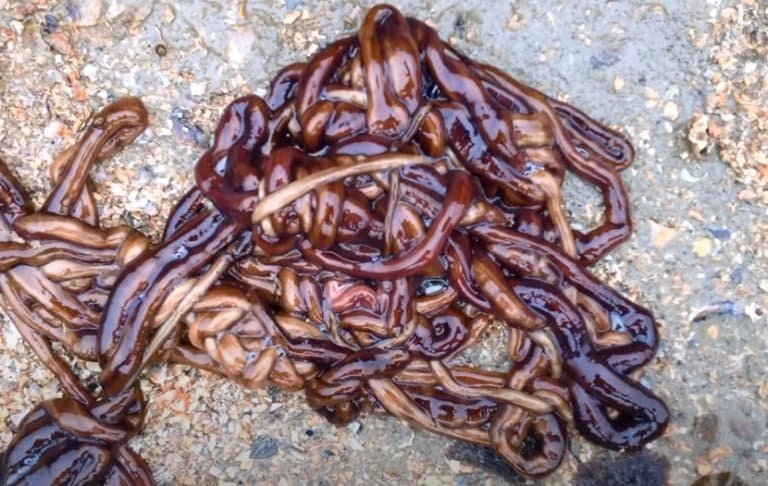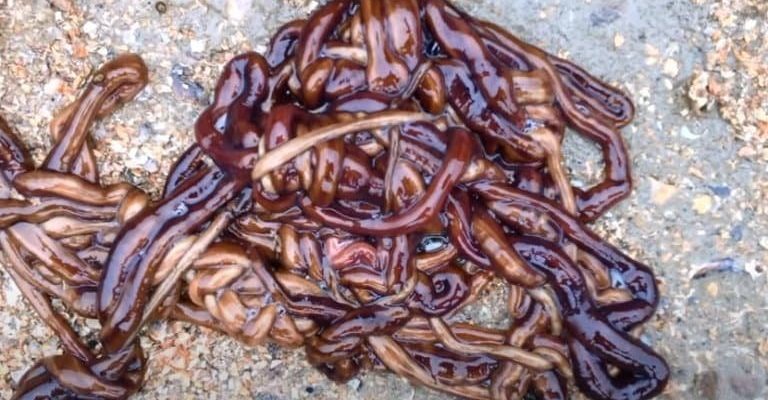
Why do these worms display such different hues across various locations? Just like how we might wear different outfits depending on the weather or occasion, bootlace worms adapt their colors to their environments. This piece will dive into the specifics of these color variations, helping you understand how geography influences these colorful critters. So, grab a coffee, and let’s explore the vibrant world of bootlace worms!
What Are Bootlace Worms?
Bootlace worms are long, slender creatures that can grow remarkably lengthy—some even measuring over 30 meters. To be honest, they can be a bit creepy if you first come across one, slinking around in the ocean. These marine worms belong to the phylum Nemertea, recognized for their soft bodies and ability to stretch like elastic. You might picture them as the ultimate underwater contortionists!
One of the most captivating features of bootlace worms is their regenerative abilities. These worms can regrow parts of their bodies, which is pretty impressive. So, if you’re ever wondering whether they have a few tricks up their sleeves, the answer is a resounding yes! Their color variations add another layer of intrigue, as the colors can shift not just locally but as you travel across regions.
Color Variations: Why It Matters
You might be wondering why we should even care about the colors of bootlace worms. Well, color isn’t just for show; it plays crucial roles in survival. Bright colors can signal toxicity or help the worms blend into their surroundings. This camouflage can be essential when avoiding predators or sneaking up on prey. For example, a worm that blends into a rocky seabed is far less likely to be noticed by a hungry fish.
Let’s break down the basic types of colors these worms flaunt: **bright reds, yellows, blues, and earthy browns**. Each color serves a purpose. Bright colors often indicate that the worm is toxic or unappetizing, while muted hues help them hide from predators. This color-coding system is fundamentally about survival—an evolutionary strategy that has stood the test of time.
Geographic Influence on Color
Bootlace worms don’t just randomly pick their colors. Instead, their hues reflect their geographic locations. For instance, worms found in tropical waters may display more vivid colors, such as electric blues and sunshine yellows. In contrast, those residing in murkier, rocky environments might have darker, more muted tones.
Think of it like fashion: When you’re at the beach, you might choose bright colors to match the sunny vibe. But if you’re in a cave, earthy tones make more sense, right? The same logic applies to bootlace worms. Their colors allow them to thrive based on their specific habitats.
Examples of Color Based on Location
Let’s take a closer look at how these colors change across different regions:
- Tropical Regions: Worms in places like the Caribbean tend to showcase vivid oranges and yellows, adapting to the bright, colorful corals of their environment.
- Temperate Waters: In cooler areas, like parts of Europe, you might find bootlace worms that are more muted greens and browns, blending in with seaweed and rocks.
- Polar Regions: Surprisingly, in icy waters, these worms can take on a striking blue hue, possibly to stand out against the white backdrop of ice and snow.
These vivid examples illustrate just how much the environment shapes the appearance of these worms.
How Color Affects Behavior
Now that we’ve established how geography impacts color, let’s discuss how these color variations influence behavior. Honestly, it’s fascinating how a creature’s appearance can dictate its actions and interactions. When brightly colored, a bootlace worm might adopt a more confident demeanor, knowing it can deter potential threats with its warning colors.
Conversely, a worm wearing earthy tones may prefer a stealthy approach, lurking in the shadows to catch unsuspecting prey. It’s almost like a game of hide and seek with nature at play. The interaction between color and behavior is a dance that ensures their survival while showcasing the beauty of marine life.
Scientific Studies on Bootlace Worm Colors
Research into bootlace worms and their color variations is ongoing. Scientists are eager to understand how these adaptations work. Recent studies investigate the genes responsible for these color changes. By mapping the genetic makeup of bootlace worms across different regions, researchers hope to unveil the secrets of these enchanting creatures.
For example, ongoing work at marine biology institutes is focusing on how environmental factors, such as temperature and salinity, influence color expression. The aim? To understand how climate change might affect these worms and, by extension, the entire marine ecosystem they inhabit.
Conservation and Understanding Bootlace Worms
Understanding the color variations in bootlace worms is not just a matter of curiosity; it’s also crucial for conservation efforts. As we face environmental changes, knowing how these worms adapt can inform how we protect them and their habitats.
Maintaining healthy ecosystems means paying attention to the little guys like bootlace worms. They may be small, but they play an important role in the marine food web. Their health can indicate the overall health of their environment, making them valuable indicators for scientists studying ocean conditions.
Final Thoughts on Bootlace Worm Color Variations
The world of bootlace worms is as colorful as it is complex. By exploring the **color variations across geographic ranges**, we gain insights not just into the worms themselves but also into the broader ecosystems they inhabit. Their adaptability showcases nature’s brilliant strategies for survival and resilience.
So, next time you hear about bootlace worms, you’ll know they’re more than just an interesting sight; they’re a fascinating example of how life adapts to its environment. Embrace the wonder of these creatures, and let their colors inspire you to appreciate the diversity of life beneath the waves!

